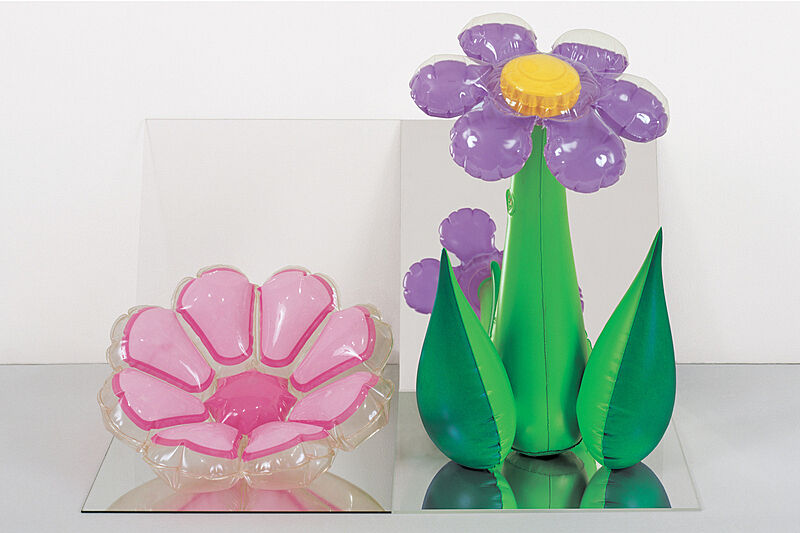Readymades
Consider ordinary objects as works of art
In 1913, French artist Marcel Duchamp invented the readymade by taking an ordinary object such as a stool, a bicycle wheel, a shovel, and a urinal, often modifying the object slightly, and displaying that object as art. This provocative act challenged the importance of aesthetics and questioned what art could be. Since the early twentieth century, the readymade has had a profound impact on the ideas and work of many artists, including Koons. Indeed, Koons has not only displayed unaltered objects as his own, he has also made meticulous replicas of mundane objects, pushing the concept of the readymade to new limits. Koons began experimenting with the idea of the readymade when he moved to New York in the late 1970s. He purchased inflatable plastic toys from discount stores on Manhattan’s Fourteenth Street, Broadway, and Lower East Side. Back in his apartment, he would make sculptures by arranging the toys against mirrored and transparent plexiglass tiles. These works were some of Koons’s first readymades.
Show your students Inflatable Flowers (Short Pink, Tall Purple), 1979. What materials do students expect to be used in a work of art? What makes something art? Use the information above and the resources section to discuss what a readymade is. How do ordinary objects provide a reflection of or commentary on the society we live in?
a. Ask your students to choose a consumer object that they would want to turn into a work of art.Why did they choose this particular object? Why should it be art? Who gets to decide if an object is art or not?
b. Have students look closely at the object, noting all of its details. How would they describe this object to someone who has never seen it before? What is the most significant thing about this object? Explore the materials it is made of and what the object is used for. Has this type of object changed over the years? In what ways? What does this object suggest about our society and the time in which it was made?

